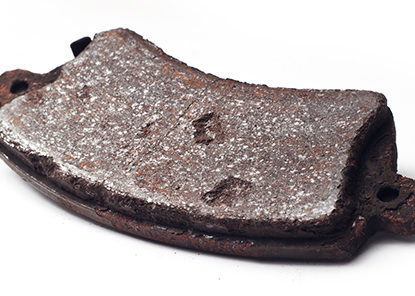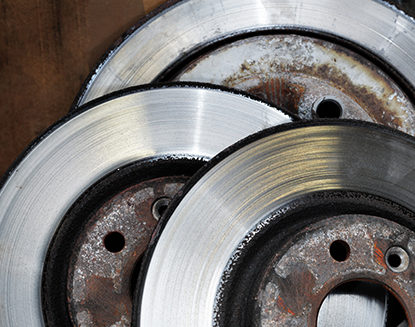Maintaining the brakes is one of the most important safety features for any vehicle owner and is key to a vehicles upkeep for long term ownership. Unfortunately brake maintenance is often overlooked by drivers. Maintaining the cars brake system can help to prevent costly repairs in the long run, and can keep the car in the best form to avoid a collision.
In order to maintain a vehicles brake system, you must pay close attention to the condition your car’s brake pads. As a general rule, the more the vehicle owner drives, the more wear on the brake pads, and therefore the shorter the lifespan of the brake pads.
Sign 1: The Brake Pedal Is Vibrating
If when you press your foot down on the brake pad, and feel vibration or constant grabbing when you attempt to apply the brakes. This is commonly known as “pulsating brakes”. The vibration is typically caused by worn out brakes, or brake pads that are warped due to heat. In the case of pulsating brakes, sometimes the brake pads are re-machined to remedy the problem. If the pads cannot be re-machined then they will likely need to be replaced with new brake pads
Sign 2: The Brake Pads Appear Too Thin
There are visual cues that you should pay close attention to that alert you when you should get new brake pads. You can check to see if they need new brake pads by looking through the spokes of the car wheel at the current brake pads. The outside brake pad is visible as the material presses against the metal rotor (brake disc). The brake pads are too thin if you see less than a ¼ inch visible. If the pads are too thin then they need to be replaced with new brake pads.

Sign 3: The Brakes Make a Clicking Noise
Another sign is when the brakes start making a clicking noise when the brakes are applied. All car manufacturers install a device that prevents brake pads from rattling upon depression of the brakes. When you hear a rattling or clicking noise upon depression of the brakes, this is an indicator that the pads need to be replaced with new brake pads.
Sign 4: The Brakes Make a Screeching Sound
In addition to a clicking noise, drivers should also listen for a high-pitched, screeching noise when the brake pedal is fully pushed down. The small metal shim surrounding the brake pads is causing this unpleasant sound, it acts as an indicator to alert drivers that they need to replace the brake pads. The pitch of this sound varies from time to time, but should be heard when the windows are up, however if the radio is on loud then noise may not be heard, so listen out!
Sign 5: The Brakes Make a Grinding Sound
When drivers hear a grinding or growling sound when the brake pedal is pressed then it is bad news, the brakes pads are not the only part that now needs replacing. The grinding or growling sound is usually caused by the brake disc and the brake caliper rubbing together, this is because the brake pad is completely worn down.
You may now need to replace the brake discs (metal rotors) or at least have them looked at by a qualified mechanic. Checking your brake pads regularly will prevent the needs to replace the more expensive brake parts, such as the brake discs, to prematurely.

Sign 6: The Car is Pulling
Although a car pulling to one side of the road can indicate a few different things, such as wheel alignment is out, it could and often indicates that a driver needs the brake pads replacing.
If the vehicle is being pulled to one side without using the steering wheel when the car is under breaking, this indicates that the brake pads have worn unevenly and need replacing.
If a car is simply pulling while a driver is driving at a constant speed, without applying the brakes, this pulling usually indicates a different repair issue.
